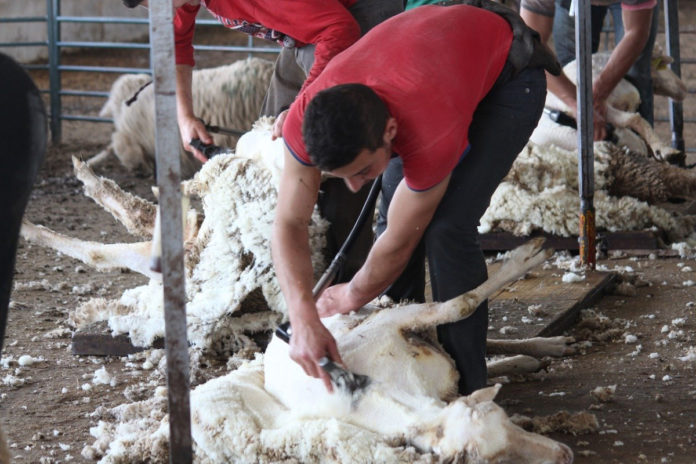Mary Roache, Teagasc ASSAP advisor, lists best practice sheep dipping guidelines.
Sheep dipping is an important annual practice on farms throughout the country.
Before you go organising your next sheep dipping day, please follow the best practice sheep dipping guidelines with water protection in mind.
Sheep dipping guidelines
- Firstly, make sure you pick a dry, sunny day with relatively good drying conditions.
- Identify your holding field/ paddock for your sheep after dipping. There should be no open-drain or watercourse adjacent to this area
- Also, check that your tank is sound and leak-proof, with no structural cracks or defects;
- Allow ewes to stand for 10-15 minutes in the adjoining drip pen when they emerge from the dipping tank. This will allow dripping solution to funnel back to the tank. This should be a concreted area.
- Keep sheep in a holding field/paddock for at least 24 hours to ensure they dry effectively to prevent any chance of any sheep dip product ending up in a drain or watercourse.
- After dipping: Wash and brush the dung from the adjoining drip pen stand thoroughly to ensure no debris, including wool, enters any drain or waterbody. Soak the brush in water several times and rinse well.
- Safely dispose of empty dip containers and opening caps/ foil after use.
- Mix spent sheep dip 1:3 parts either with slurry or water and land. Spread by a tanker at the rate not exceeding 1760 gals/ acre (20’000l per Ha.).
- In no circumstances should you dispose of spent dip if there is no facility or slurry tanker available to spread the dip.
- These recommendations are also relatable to pour-ons that use active ingredients such as cypermethrin. Allow pour-ons, when sprayed on the fleece, to dry effectively before allowing sheep to go back to open hill or mountainous areas or any lowland areas where watercourses are present. As with dipping, keep sheep in the holding field/paddock for at least 24 hours before return to hill or areas containing watercourses.
- Consider injectable products to control ectoparasites where dipping is not feasible. Please check and consult with your local veterinary practitioner for advice.
- Mobile spraying or dipping is an option, and the same principles above apply.
- Careful disposal of spent footbath solution is also extremely important, involving either formalin, copper sulphate or zinc sulphate. Please read the manufacturer’s instructions carefully regarding health and safety procedures and recommendations on safe disposal of spent solution. Dispose of products, according to the datasheet.
Ingredients detected in waterways
Sheep dipping products containing chemical compounds such as organophosphates (OPs) and cypermethrin are extremely effective in their jobs of eliminating and preventing a number of serious sheep ectoparasites, namely blowfly (bluebottle) strike, lice, keds, ticks and sheep scab.
Parasites such as bluebottles are insects and the sheep dipping products used are called insecticides. They effectively target and kill their target organism.
Best practice when using sheep dips has gained increased attention in recent times. This is primarily due to active ingredients such as cypermethrin been detected in our waterways.
When cypermethrin is detected in our streams and rivers, we can conclude that the aquatic living insects will have been eliminated.
This has serious consequences for the health of other species reliant on aquatic insects as part of the overall food chain.





